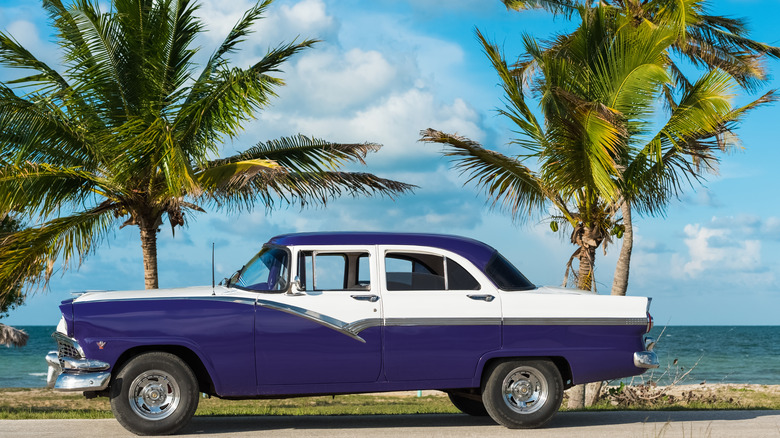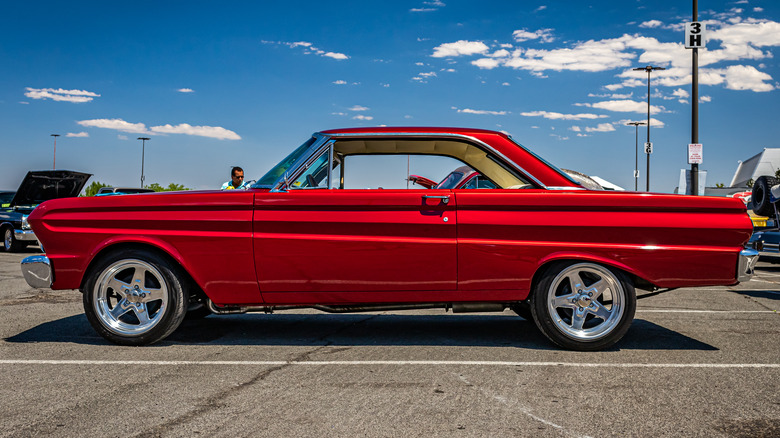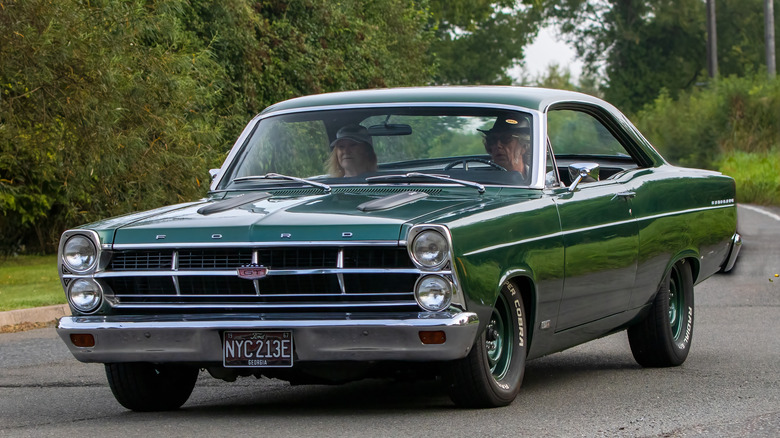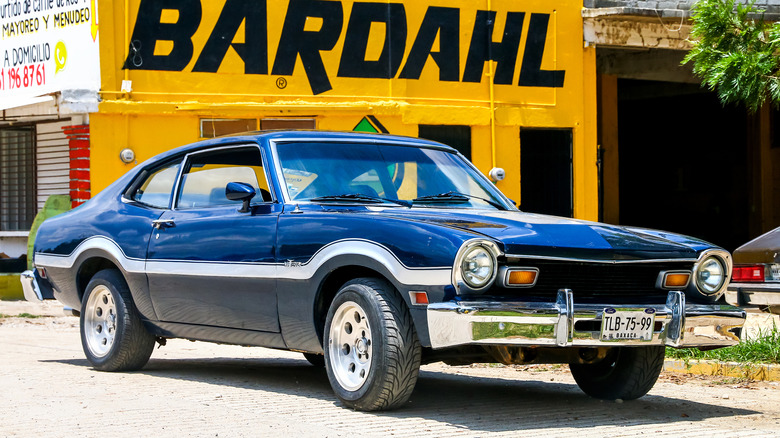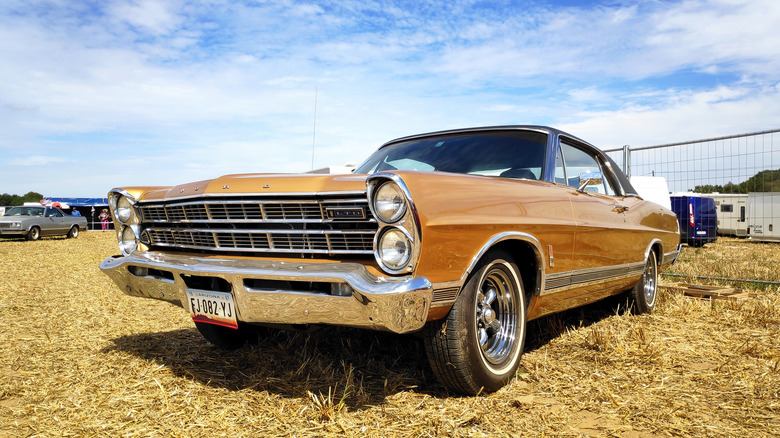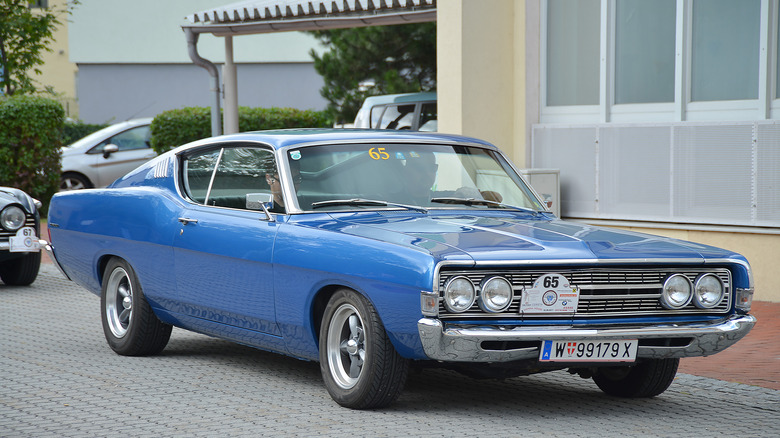5 Underrated Classic Fords To Consider For Your Next Restoration Project
Bringing an old classic Ford car back to life is, without a doubt, an exciting process. But instead of choosing one of the most iconic Ford models ever built that everyone knows and loves, why not pick one that's not so popular? They're special because not many people have them, and you get to make them look really cool in your own way. The more popular Ford classics don't get this luxury since authenticity is where the car's value is.
Choosing a less popular Ford to restore can be a great idea for other reasons as well. These cars are usually cheaper to buy and fix than the Mustangs and Broncos. This makes them perfect for people new to restoring cars or those who already have a collection and want something different. You also won't be competing as much with others to find rare or high-demand parts.
Before we get into what underrated classics should be on your radar, you need to know that while restoring is fun, you have to expect a challenge. You need to be ready to look for parts, fix rusty spots, and maybe even rebuild the engine. That doesn't mean it's all bad — finding the right pieces can be hard, but it's also exciting when you finally find what you need. Sometimes, you have to be creative to solve problems, making you feel connected to your car and the car restoration community.
Ford Falcon
This is one of those cars from the 60s that people initially didn't take seriously. But Ford proved them wrong. In its first year, the Falcon sold over 435,000 cars. Restorers like this car for multiple reasons, but sentimental reasons like how it was a precursor to the Mustang play a big part.
When it comes to looks, the Falcon is pretty simple but nice. The Futura version stands out because it has special seats and trim that make it look sporty. Restoration enthusiasts are drawn to the Falcon for its clean lines and simple design, which means a straightforward restoration process that can bring these vehicles back to their original glory. You can even go for some modern modifications, keeping the classic charm.
The Falcon's engine isn't very impressive. It has modest options, including the 101 hp, 170 CI inline-six, which is efficient but not exactly powerful. However, that's good if you plan to restore and then modify. Especially when environmental considerations are also part of the conversation around classic car restoration. The Falcon was not designed with modern emissions standards, so enthusiasts can include updates that reduce their environmental impact, like engine swaps.
Restorers will be happy to know that a fully restored Falcon, particularly the Futura variant, can command prices that reflect the investment of time and resources that went into it. Barn Finds reported on a fully restored 1961 Falcon Futura, available for $13,500, back in 2023.
Ford Fairlane
If you're considering fixing an old car, don't overlook the Ford Fairlane, especially from the 1960s to the 1970s. This car got its name from Henry Ford's big house, and over 15 years, it came in many shapes like convertibles, sedans, and wagons.
The Ford Fairlane's engine options in the 60s can get super powerful, like the 390 Thunderbird Special V8 and later the 427 "side-oiler." Getting your hands on the limited-edition 1964 Thunderbolt is often a restorer's dream, especially considering the car's racing legacy. In any case, the spacious engine bay of later models offers ample room for modern upgrades, such as swapping the original engine for a more powerful V8.
What's great about the Fairlane is it's not as expensive as other cars like the Mustang when you're buying one for a restoration project, but market value after restorations is another story. Sure, it depends on factors like model year, condition, and authenticity of restoration. Still, the increasing rarity of these vehicles in good condition also increases their appeal and value among collectors and restorers.
The Fairlane is not as underrated as other cars on this list and has its benefits. Parts and ideas for restoring a Fairlane are plentiful, thanks to a dedicated community of enthusiasts and specialists in classic Ford components and performance upgrades. In making the Fairlane eco-friendly, you can update the engine and exhaust systems for better efficiency and lower emissions.
Ford Maverick
Back in the 1970s, when Ford introduced the Maverick amidst a fuel crisis and an American appetite for smaller, more economical vehicles, it had one job — to stand out in the wave of imported compact cars dominating the market.
Only a handful of compact cars were raising eyebrows regarding the excitement factor then, and the Maverick became one of them. The Maverick's looks are one reason enthusiasts fancy this car for restorations — Ford designed it with an eye-catching two-door fastback style like that of the Mustang. With options for wood veneer interiors, vinyl roofs, and trims, including the sporty Grabber and the luxurious LDO, the Maverick could be as simple or flashy as you like.
And in the same spirit that made it look like the Mustang, the Maverick was a compact car with the heart of a muscle car, especially in its Grabber variant. The base models started with average inline-six engines, but by 1973, Ford had answered the call for more power by offering a 302 cu V8 engine. This move elevated the Maverick from a practical compact to a bona fide muscle car contender. This mix of practicality and performance made the Maverick especially great for those looking for American speed without the hefty price tag of a traditional muscle car.
Another reason restoration enthusiasts find the Maverick a compelling project is its rarity and the increasing market value of well-maintained examples, which can reach the low to mid $20,000s.
Ford Galaxie
The Ford Galaxie, made from 1959 to 1974, is a classic car worth thinking about for your next fix-up project. It's also one of the ten classic Fords we want to make a modern comeback. Interestingly, its name was inspired by the excitement of space exploration at the time.
Over the years, the Galaxie has undergone several transformations along with shifting tastes and technologies. In fact, the Galaxie's lights can be a story of their own. In 1960, it sported a new look with four half-circle-shaped taillights, signaling a departure from the previous year's model. The 1965 model introduced a big change with stacked vertical dual headlights, moving towards a more rectangular shape. You can see how Ford sought to balance the Galaxie's space-age roots with modern trends, and this history in design interests many restorers.
Just as interesting to restorers is what's under the hood. The Galaxie had a range of powerful engines, from 225 horsepower to 332-cu.in. V8 in the 1959 Skyliner to more potent options in later years, including a 300-horsepower, 352-cubic inch V8. These engines, combined with advancements like the Cruise-O-Matic three-speed automatic transmission and improved suspension systems, offered performance and comfort almost ahead of its time.
Today, Galaxies are rare and valued by car enthusiasts. Some models, like the Skyliner with its unique roof that moves, are especially loved. There's also an abundance of parts available for those who want to restore a Galaxie.
Ford Torino
The Torino, made from 1968 to 1976, is a cool but often overlooked classic car by Ford. It started as a fancier version of the Ford Fairlane, but it got so popular that it took over the Fairlane's spot.
If you're looking for an old Torino to restore, you'll find three generations of the vehicle, each with different styles and facelifts. You could pick from convertibles, sporty models, family sedans, and wagons. This car had a lot of engine choices, too, ranging from the economical straight-6 to the roaring 429 cubic inch V8.
Restoration enthusiasts have much to say about Torino's transformation potential, especially how it's fine for faithful restorations and modern modifications. One good example is a post on Ford Forums Online of a student's journey restoring a 1968 Torino GT, originally equipped with a 429 from a Thunderbird, back to its former self with a real focus on authenticity, right down to its column shift automatic and Wimbledon white paint job.
Market value and rarity in the U.S. for the Torino vary, with earlier models generally more sought after because of their closer ties to the peak muscle car era. But even the less appreciated models, like the 1972 Gran Torino, offer a unique restoration opportunity, potentially as a canvas for a rat rod or a tribute project. There are plenty of parts available and a community of fans ready to help. Despite the hard work, the result is a cool, classic car that stands out!
